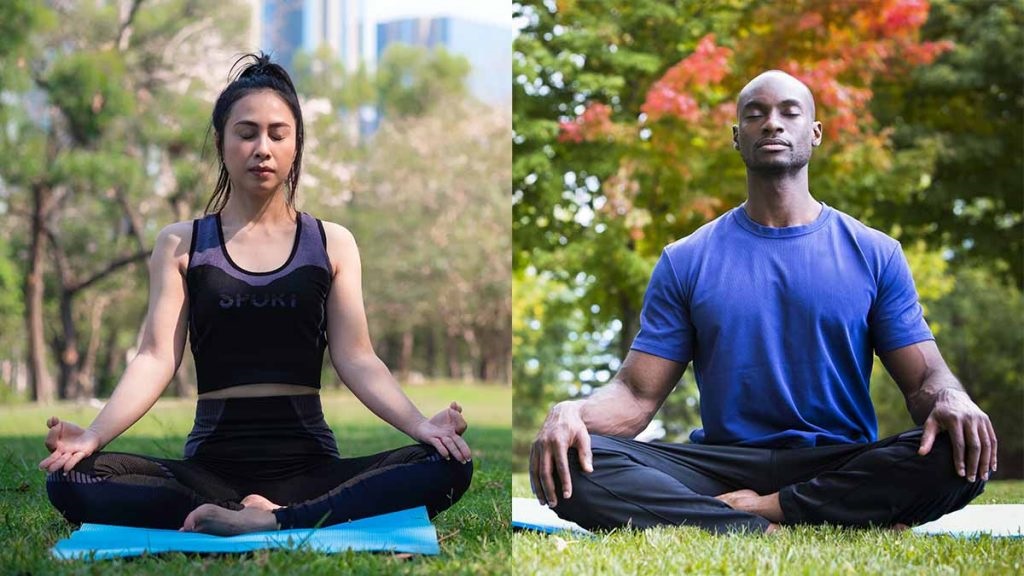
23 Aug Analytical Meditation VS Concentrative Meditation (Stabilizing)
In the history of yoga, innumerable meditation techniques have been born and, even today, others continue to be born. In some, we focus on an image. In others, we consider a chakra. In others, we use the body and we use a mantra to focus the mind.
Each has its characteristics and, although they may seem very different at first glance, they can all fall within two major types of meditation: concentrative meditation (also called stabilizing) and analytical meditation. In this article, I will examine what they consist of and the differences between these two ways of meditating.
What is Concentrative meditation?
The meditation concentrative, by many known as stabilizer, is to “concentrate” the mind on an object of concentration.
When we practice this technique, we try to keep the mind focused for the duration of the practice and, if we lose concentration and the mind goes after the thoughts, when we realize it, we return to the object of concentration.
It is normal for the mind to run afterthoughts, live in psychological time, and not stay in the here and now and when we try to keep it on a single object, it opposes resistances.
The usual behavior of the mind is to wander and be agitated. It is no coincidence that it is called the “monkey mind,” precisely because it continually jumps from one thought to another.
Stabilizing meditation serves precisely to work on this characteristic of the mind to make it more stable and calm.
In short, concentrative meditation is nothing more than what Patanjali defines in the Yoga Sutras, Dharana, which means concentration.
Objects for concentration
Suppose we want to practice this type of meditation. In that case, we are spoiled for choice because over the millennia. Many meditations have been born, which are always concentrative, but which use different objects for concentration.
Let’s see the main ones:
The breath: This is a completely natural object and is used in many meditations. Breathing is often used, for example, in mindfulness meditation.
The sensations: This is also a natural object on which we can focus the mind. We find this object, for example, in many forms of Vipassana meditation.
An image: In this case, it is an imaginary object. Symbols, drawings, images of enlightened people, gods embodying specific virtues, etc … can be used.
A sound: This instead is the object used every time one meditates using mantras, such as the well-known Om, the Gayatri, and many others. If you like meditation with sound, check out 21Mantra, the 21-day program dedicated to mantras.
What is Analytical Meditation?
In this type of meditation, we focus on analyzing something real, such as what manifests itself in the body, or we can also linger in investigating important concepts such as impermanence, ego, non-identification, flow thoughts, the present moment, letting go, and many other valuable teachings that we can cultivate as we meditate.
The main purpose of this type of meditation is to eliminate all the conditioning (samskaras), which make us see reality in a distorted way, to see it without filters, for what it is.
When these illusions are eliminated, many other problems, rooted in Avidya (non-vision, spiritual ignorance), also disappear to give way to psycho-physical well-being.
Furthermore, analytical meditation is the one that also leads to wisdom, which in turn allows us to advance on the spiritual path.
Analytical or Concentrative Meditation? Which one to practice?
Many people ask me which type of meditation is best for them and usually, my answer is the following: it depends on your experience.
If you have never practiced meditation and your mind is quite agitated, I think it is more appropriate to start with the concentration one. I say this because to practice the analytic one. You need to have a calm and concentrated mind. Otherwise, it is impossible to analyze a certain concept.
Only when you can keep your mind steady on an object can you go on to analyze something. But as long as the mind is agitated, continues to react to everything that happens, runs afterthoughts, and is not concentrated, in my opinion, it is preferable to start with stabilizing meditation.
While it may seem like they are two completely different types of meditations, they are closely related. The practice of stabilizing meditation leads to analytical meditation and, vice versa. Without an objective analysis, there can be no correct concentration.
Therefore the two meditations are two sides of the same coin and should support each other. One supports and strengthens the other, and together they lead each practitioner to experience the much-desired benefits of meditation.
You may also like to read, Why does character motivation matter?

Sorry, the comment form is closed at this time.